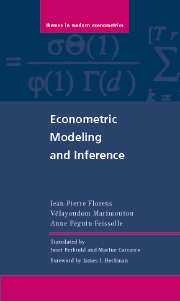Preface
Summary
The objective of econometrics is to study economic phenomena using statistical observations. Econometrics formalizes the economic theory in the form of relationships (models) whose unknown elements are determined by the available data. Econometrics quantifies and tests economic theories and makes those theories operational through forecasting or simulation of the impact of political or economic decisions.
Historically, econometricians studied first the macroeconomic relationships between large aggregates that describe economic activity at the national level. They then analyzed individual behaviors of consumers and producers. The domain of application later extended to finance, the study of developing countries, education, game theory, and so on.
The aim of econometric research is to discover regular features within the set of variables generated by mechanisms that involve economic components. Hence, it is by nature an applied field, and an econometrics book should provide reliable information on the values of the essential parameters of the economic laws. Reaching this goal is difficult: social phenomena contain few universal laws and each result is limited by the specific conditions in which the phenomenon occurred. Thus, econometrics is essentially a means for the systematic analysis of economic facts and may then be used for forecasting.
The econometric methodology rests on two elements: first, the economic theory that allows us to select the variables, to define the relevant magnitudes to estimate, and to limit the class of models that may be used; second, the statistical techniques for estimating, testing, and forecasting.
Information
- Type
- Chapter
- Information
- Econometric Modeling and Inference , pp. xix - xxiiPublisher: Cambridge University PressPrint publication year: 2007
